This article is also available in: 日本語
Ed Roberts was the first person with severe disabilities to attend University of California, Berkeley.
He was one of the leaders of the disability rights movement which started in Berkeley in the1970s.
As an activist, his work helped change the lives of people with disabilities throughout the US.
When he passed away in 1995, many people raised their voices to the city of Berkley to memorize Ed Robert’s life by naming a building after him somewhere in Berkeley.
But, at that time, there was no building which was accessible enough for people with disabilities since it had been only 5 years since the passage of ADA.
Since Ed Roberts had devoted himself to change the lives of people with disabilities including accessibilities, disability communities raised money (it took over ten years) and built the “Ed Roberts Campus,” a place anyone can access without barriers.
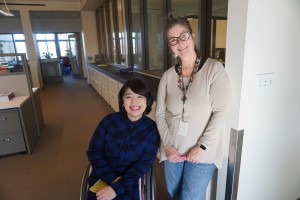
Ms. Susan Henderson, a board member of Ed Roberts Campus, showed me around.
She is also an Executive Director of Disability Rights Education and Defense Fund, which is one of the seven organizations that worked to build Ed Roberts Campus and is located in the building.
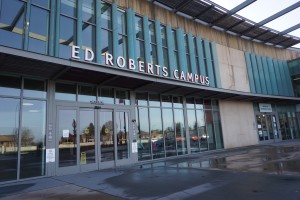
The exterior of Ed Roberts Campus. The front is not a straight line, but a little curving one.
It stands for an image of welcoming everyone.
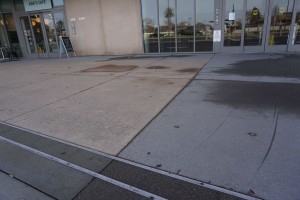
In Japan, we see Braille blocks everywhere for people with visual impairment.
But actually I don’t see often those in the US.
The entrance of Ed Roberts Campus doesn’t have that either.
In fact, to wheelchair users, Braille blocks are kind of troublesome because the blocks make the road very bumpy.
For the entrance of Ed Roberts Campus, people discussed if they could put flower beds along the path to the front door to guide people with visual impairment instead of Braille blocks, but that also makes limitations for wheelchair users to move around.
Eventually, they used tiles with different surfaces so that people who use a white cane can feel the differences of the tiles and can reach the entrance by feeling the rough surface of the darkly colored tiles.
The tiles have 2 different colors which help people with low vision distinguish the difference to reach to the entrance too.
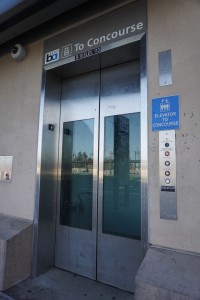
Ed Roberts Campus is very easy to access by public transportation.
Ashby Station on BART is directly connected to Ed Roberts Campus’ basement.
If you go up to the ground level via an elevator, Ed Roberts Campus is still next to the exit.
BART is a high-speed rail transit in the Bay Area.
It is very convenient for wheelchair user to take because no gap between platform and train cart.
You can also access to Ed Roberts Campus via bus.
There is a bus stop outside the building and just across the street.
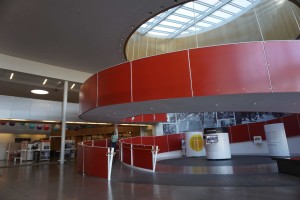
Once you enter the building, you will find the symbolic red spiral ramp which lets you access the 2nd floor.
The width of the ramp is wide enough for 2 people who use wheelchairs to go side-by-side.
It is a gradual ramp and has flat spaces in certain distance for resting
It is very friendly designed to people who use manual wheelchair and people who push them.

The ramp has handrails too.
People with visual impairment can go up and down safely by using this.
Also for people who can walk but feel safe by holding handrails, for example elderly people, this design helps a lot.
The pictures on the wall were taken in 1977 during a disability rights action in San Francisco and Washington DC.
You can also see or listen to short clips that introduce those active movements behind each picture.
In addition to the red spiral ramp, you can access to a different floor via an elevator or stars.
It is always great to have multiple choices.
The elevator opens one door (front) when you enter, and opens the other door (backside) when you get off.
This makes wheelchair users get off easily.
If the only one door opens when elevator users get in and get off, wheelchair users need to turn 360 degree inside of the elevator.
If the elevator is big enough, wheelchair users may be able to make the turn inside the elevator, but if 2 wheelchair users use the elevator at the same time, it will be hard for both of them to turn around because of lack of space.
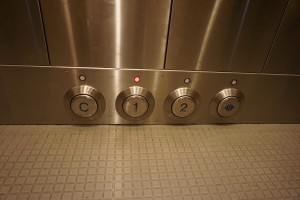
One more interesting design about this elevator is that it has control buttons on foot height.
In Japan, we often see elevator buttons located lower than regular button location so that wheelchair users can use them.
However those buttons are actuarially for wheelchair users who cannot use their hand.
Among wheelchair users, some people have disabilities on their arms and hands.
The buttons on foot height is really helpful for those people because they can press by their electric wheelchairs and control the elevator to go to the floor they want to.
